Kingdom of Prussia Academism
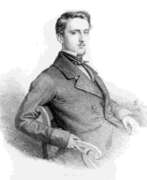

Hiob Carl Oscar Begas was a German painter of the mid-nineteenth century. He is known as a portraitist, landscape painter, historian, teacher, son of the painter Carl Begas, brother of the sculptors and painters Carl, Rheingold and Adalbert Begas.
Oscar Begas was the author of portraits of many prominent German and foreign statesmen and military figures, representatives of science and culture. Becoming a popular painter, he received many orders from King Friedrich Wilhelm IV of Prussia. According to critics, more than in commissioned portraits, Begas's painterly skill was demonstrated in his atmospheric winter and autumn landscapes, on which the master concentrated towards the end of his life.
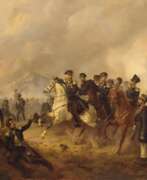

Ludwig Elsholtz was a German painter of the first half of the 19th century. He is known as a battle painter.
Elsholtz began his career with genre paintings, mostly battle scenes, which attracted attention with the artist's excellent observation and exquisite execution. Later he moved on to creating larger and more imaginative images. When the master had health problems, he turned to watercolor painting. He became famous for his large-scale canvases with battle scenes, such as "The Battle of the Nations at Leipzig" and "The Battle of Waterloo". In addition to battle scenes, Elsholtz also created genre paintings.
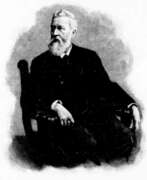

Gustav Graef was a German painter of the second half of the 19th century. He is known as a painter who specialized in historical and portrait painting.
Graef was commissioned early in his career to create murals for the New Museum in Berlin. One of his famous works was the giant monumental canvas "Charlemagne Adopts Vidukind". The artist also created scenes from the tales of Hercules and Theseus for the Old Museum in Berlin. Then in his genre paintings he moved from mythology to modern history. The master later concentrated on portrait painting, creating idealized female portraits that brought him commercial success. In 1880, at the height of his fame, Graef became a member of the Prussian Academy of Arts.
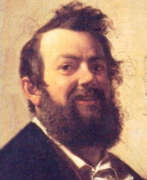

Johann Peter Hasenclever was a German painter of the first half of the 19th century. He is known as a painter, a representative of the Düsseldorf school of art, who is considered one of the founders of German genre painting.
Hasenclever began his work by interpreting biblical, mythological and romantic subjects, but eventually found his calling in humorous scenes from bourgeois life, especially Pyrenean towns and cities. Among his famous works are "The Amusing Examination," "The Reading Room," and "The Trial of Wine," distributed in engravings and lithographs.
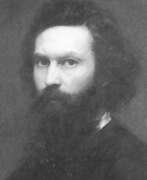

Friedrich Wilhelm Christian Theodor Kaulbach was a German painter of the second half of the nineteenth and early twentieth centuries. He is known as a painter, portraitist and teacher.
Kaulbach became court painter of Hanover and professor at the University of Hanover in 1856. His fame came in particular from his portraits of King George V. Kaulbach's portraits were popular with the local aristocracy. They were rich in detail and reflected the theatricality and frivolous elegance of the time. The master was particularly successful in his portraits of women. His son, Friedrich August Kaulbach, also became a famous artist.


Friedrich Johannes (Hans) Kugler was a German painter of the mid-nineteenth century. He is known as a landscape and portrait painter.
Kugler is known for his genre (including children's and group) portraits and rural landscapes. He studied at the Grand Ducal Saxon Art School in Weimar under Arnold Böcklin. The artist suffered from a chronic illness and lived only 33 years. His works were auctioned 18 times in the painting category.
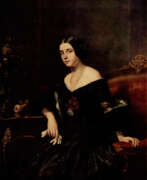

Gustav Karl Ludwig Richter was a German painter of the mid-nineteenth century. He is known as a historical painter and portraitist.
Gustav Richter created his first significant work, The Resurrection of Jairus' Daughter, in 1856. This painting was a great success, as it was one of the first attempts to realistically interpret biblical subjects. In the same year, the artist presented to the public the first portrait of his work, which immediately brought him a reputation as a talented portraitist. His best portraits were dedicated to Sultan Abdul-Mejid, the Duchess of Edinburgh, Emperor William I, Empress Augusta and Queen Louise. In his works, in addition to portraits, Richter concentrated on depicting individual figures. Among his famous works in this genre are "Egyptian Woman", "Odalisque" and "Crimean Gypsy Woman".
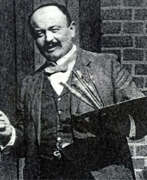

Carl Röchling was a German painter and illustrator known for his depictions of military and military-historical subjects. He gained fame for his portrayals of battle scenes, particularly those depicting Prussian army victories during the Franco-Prussian War.
Röchling collaborated with other artists such as Georg Koch and Eugen Bracht on projects like the panorama of the Battle of Chattanooga. He also worked alongside Richard Knötel and Woldemar Friedrich, illustrating popular children's books such as "Der Alte Fritz in 50 Bildern für Jung und Alt" (1895) and "Die Königin Luise in 50 Bildern für Jung und Alt" (1896).
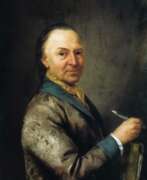

Christian Bernhard Rode was a German painter of the second half of the eighteenth century. He is known as a historical painter and printmaker, closely associated with the Berlin Enlightenment movement.
Bernhard Rode became famous for his works depicting historical events and allegorical works. His works combined a variety of techniques, including paintings, engravings, book illustrations, and reliefs. He embodied motifs from the Old Testament, ancient mythology, history, and literature contemporary to him.
Rode was director of the Berlin Academy of Fine Arts from 1783 to 1797.
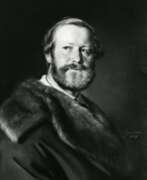

Karl Ludwig Rosenfelder was a German painter of the mid-nineteenth century. He is known as a painter, graphic artist, educator, and philosopher.
Rosenfelder specialized in religious and historical paintings, including large-scale paintings of medieval subjects. He also participated in the creation of wall paintings at the University of Königsberg, which earned him an honorary doctorate.
Rosenfelder was one of the founders of the Association of Berlin Artists in 1841, and in 1845 he became the founder and director of the Königsberg Art Academy, a position he held until 1874.
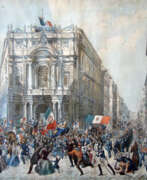

Franz Wenzel Schwarz was a German-Bohemian painter of the second half of the nineteenth and early twentieth centuries. He is known as a portrait painter, master of historical genre and glass artist.
Schwarz created many portraits of churchmen, scholars, high officials, major businessmen, as well as children and women. He also created many religious paintings and stained glass windows for churches. He was a member of the Society of Artists of Vienna and other artistic associations. In the later part of his career, Schwarz concentrated on creating genre and portrait paintings, selling them to various countries, including America and Russia. Between 1912 and 1918, he copied paintings from the Old Masters Picture Gallery in Dresden.
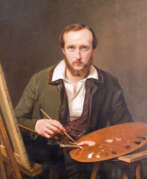

Felix Schadow was a German painter of the mid-nineteenth century. He is known as a portrait painter and genre painter, the son of the sculptor Johann Gottfried Schadow and half-brother of the painter Friedrich Wilhelm von Schadow.
Felix Schadow studied in Dresden, where he created his first known painting, Christ and Mary and Martha. After his father's death in 1850, he decorated the walls of his studio in his parents' reconstructed home with a cycle of frescoes depicting his father's life. The master's famous works include paintings such as "Joseph and his brothers reunited in Egypt," "The Engagement of Mary and Joseph," and "The Family Before the Burning Ruins."
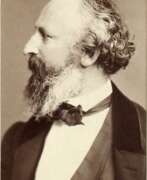

Carl Constantin Heinrich Steffeck was a German painter of the second half of the nineteenth century. He is known as a painter, graphic artist, animalist and portraitist.
Carl Steffeck was particularly famous for his depictions of horses and dogs. He studied art in Berlin, Paris and Italy. Returning to Germany, the artist painted scenes of hunting and animals, sometimes turning to the historical genre. His large historical canvas "Albrecht Achilles in the struggle with Nuremberg for the standard" in 1864 acquired the National Gallery of Berlin. From the 1850s, Steffeck began teaching, earned the title of professor at the Berlin Academy of Arts and became rector of the Königsberg Academy of Arts in 1880.
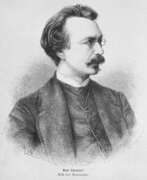

Paul Thumann was a German painter of the second half of the nineteenth and early twentieth centuries. He is known as a portrait painter and book illustrator.
Paul Thumann created drawings that decorated the works of famous authors such as Goethe, Tennyson, Chamisso, Gamerling and Heine. According to critics, his illustrations were characterized by elegance and subtlety of lines, expressiveness of human and poetic images. Stylistically, the master's works approached Art Nouveau, popular at the turn of the XIX-XX centuries. Thumann also created paintings on historical, religious and mythological themes.


Peter Joseph von Cornelius was a German painter of the first half of the 19th century. He is known as a painter, draftsman, teacher, and representative of Romanticism.
Von Cornelius was one of the founders of the Nazarene society in Rome and sought to revitalize and modernize German fresco painting. He led the fresco decoration work in Munich and the Ludwigskirche, and was also involved in the design of murals for the Berlin cemetery. The art school founded by Cornelius revitalized mural painting in Germany and influenced other European countries. In addition to monumental works, the artist also created illustrations for literary works including Faust and The Song of the Nibelungs.


Friedrich Georg Weitsch was a German painter of the late 18th and early 19th centuries. He is known as a painter and printmaker.
Weitsch created landscapes, historical and religious subjects, but a special place in his work was occupied by portraits of aristocrats, as well as ordinary people. His works are in various museums, including the Braunschweig City Museum, the Braunschweig Land Museum, and the Duke Anton Ulrich Museum of Braunschweig-Wolfenbüttel.